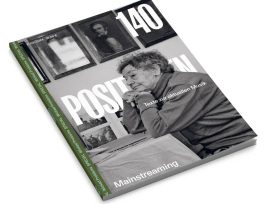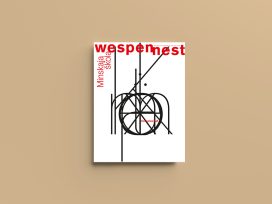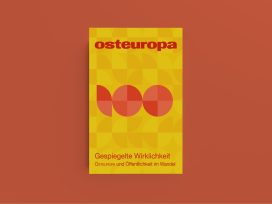It was an extraordinary set. On the one hand the agile mandolin-like tamburas of Söndörgô and on the other, the wild wailing of Macedonian Gypsy saxophonist Ferus Mustafov. Singer Ágnes Herczku was bravely performing a sultry Gypsy song as Ferus stalked around her preparing to undress her with his sax. This was on stage at MÜPA, Budapest’s Palace of the Arts, in a concert to mark the 15th anniversary of Söndörgô – hard to say, but easy to listen to. They are hardly a new band, but they are at the top of their game, with this groundbreaking collaboration with Ferus Mustafov and their first international release – Tamburising – this year.
Söndörgô’s music is that of the South Slav communities of Hungary. It is delicate yet fiery with an irrepressible spring to it. In the fourteenth and fifteenth centuries, as the Ottoman Empire expanded into Serbia, many Serbs fled north up the Danube. The South Slavs founded a number of towns along the river which, in many cases, still have a strong Serbian or Croatian flavour. These include Mohács, Ráckeve (with the most beautiful Serbian Orthodox church in Hungary), and Pomáz and Szentendre, close to Budapest. Szentendre is a popular day trip from Budapest and is where Söndörgô are based.
At home, next to the Orthodox church in Szentendre, Áron Eredics, the leader of Söndörgô, introduces me to the tambura, the plucked instrument that gives their music its character. “The tambura is probably of Turkish origin, but it was brought into Hungary by the South Slavs,” explains Áron as he plucks it with a plectrum in his right hand and runs the fingers of his left hand over the five strings of the instrument. “My father bought me a tambura when I was five years old,” he adds, “although I didn’t play it at that time. It was when my cousin Dávid said they wanted to start a band at school that we began in a serious way. But it was very easy because I’d heard all this music around me.”
Áron’s father, Kálmán Eredics, is one of the founder members of Vujicsics, Hungary’s first professional band playing South Slav music. Kálmán and his brother Gábor Eredics grew up in the town of Pomáz, just next to Szentendre. It was there they formed a band in 1974 inspired by a local group playing South Slav music for weddings and parties, but “they drank a lot and so you couldn’t really rely on them, but they knew some really old tunes,” explains Kálmán. This coincided with the folk revival in Hungary and the start of the táncház (dancehouse) movement. This was a grassroots revival of traditional music, with a whiff of political opposition. In place of the choreographed state dance ensembles, the táncház musicians preferred to seek out the real musicians in the countryside and learn from them the music and dances. It was a vibrant, unofficial scene with numerous táncház venues dotted around Budapest working virtually every day of the week.
Also living in Pomáz was a composer and ethnographer of Serbian background called Tihamér Vujicsics (19291975) who composed for the Hungarian State Folk Ensemble and collected Serbian and Croatian tunes from the communities in Hungary. Sadly Vujicsics was killed in an aircrash in 1975 and the band adopted his name in his memory – “and we’d been given this horrible official name – the Pomáz Young Folk Group of the Minorities – so we were very glad to get rid of that”, Kálmán chuckles. Before his death Vujicsics had virtually completed Musical Traditions of South Slavs in Hungary, a collection of melodies and songs, which was published posthumously in 1978. It was from this book and from the tunes they’d learned from the drunken old-timers that Vujicsics built their repertoire. They released an awardwinning debut CD in 1981 and became one of the country’s best ensembles and, till Söndörgô started, the only professional band performing the music of the South Slavs in Hungary.
Söndörgô are three brothers, Áron, Benjámin and Salamon Eredics plus cousin Dávid Eredics on tamburas, sax and accordion, with Attila Buzás on bass tambura. While Kálmán Eredics prepares goulash in the traditional way in a pot over an open fire in the garden, his sons take me through the tambura family. The small lead tambura (prímtambura) takes most of the melodic lines, but is backed up by the larger bass-lead tambura (basszprímtambura) while the guitar-like kontra tambura plays accompanying chords. The bass tambura (tamburabôgô) looks deceptively like a regular double bass, but is played with a plectrum and has frets. While Áron’s lead tambura is exquisitely made by a master luthier (Dule Rajkovic) in Vojvodina, he also has a tiny home-made instrument that looks almost like a toy. He finds this three-stringed samica tambura, which he bought in a street market near Budapest, particularly exciting because it is the same sort of instrument that Bartók recorded in one of the field recordings he made of tambura music. He plays a tune Bartók recorded from a musician called Milan Markovic’ in the Banat region in 1912. In fact it was Vujicsics who first used the Serbian material that Bartók collected and recorded their own arrangements of the melodies.
As we tuck into the goulash with slices of hot pepper and white-wine spritzer, I get to discover the family history. They believe the Eredics name is Croatian, but the family now only speak Hungarian. Kálmán’s grandmother was Serbian (and the last Serbian speaker in the family), but she married an Austrian (there was some anger in the family about this). Kálmán married a Jewish wife from what is now Ukraine and they are proud of their totally mixed ethnicities. It certainly means that their commitment to the music can’t be described as nationalistic.
Although Söndörgô, and Vujicsics before them, are now primarily a concert band, they have roots in the táncház tradition which still feeds strongly into the Hungarian folk scene. If you think of the sound of a Hungarian folk band, the chances are you’ll imagine a fiddle or two, perhaps a kontra in the middle of the texture and a strong sawing double bass. The staple repertoire of the táncház is music from Transylvania with its rich and elegiac sound of bowed strings. It’s very different to the delicate, transparent sound of Söndörgô’s plucked strings. Of course, far fewer people in Hungary know the South Slav dances that are part of Söndörgô’s repertoire, but they assisted the Serbian dance group in Pomáz and have often played at táncház parties in Szentendre, Pomáz and Budakalász, the towns near Budapest with South Slav communities. They’ve also asked colleagues up from Mohács and Pécs in the south of the country to teach some of the old dances.
Whereas Vujicsics took much of their repertoire from around Szentendre and Tihamér Vujicsics’s book, Söndörgô have taken their inspiration from the scene in Mohács, a town on the Danube in the south and the heartland of tambura music in Hungary. “In Mohács, tambura playing is more ornamented and stronger in the style of playing,” explains Áron and demonstrates. As he strikes the strings, it is clearly much more percussive and incisive than the softer Serbian style of Szentendre. Down in Mohács, he introduces me to the maestro of Gypsy tambura music, József Kovács, or Józsi as everyone calls him. He’s been an inspiration for a generation of young players in Mohács and was a guest on Söndörgô’s recent Tamburising CD.
Józsi came from a family of musicians, but he tells me he only started playing (aged 8 or 9) because he broke his leg and needed something to amuse himself. He played for 20 years in a riverside restaurant in Mohács “and you have to know all the repertoire – Serbian, Croatian, Hungarian as well as operetta tunes,” he chuckles. He was always in demand at local weddings and now teaches tambura to a new generation of pupils. “These days the weddings are less common and more often I’m playing at funerals,” Józsi admits. “The people whose weddings I played for 20 or 30 years ago are now dying and want me to play at their funerals.” But he is optimistic about the future: “It’s starting again. There’s a new interest amongst young people in this music. It used to be mostly Gypsies playing, but now it’s fifty percent Hungarians, probably as a result of the táncház scene.”
In Hungary Mohács is notorious for the battle that took place here in 1526 when Hungary was defeated by the Ottoman troops of Suleiman the Magnificent. It marked the end of Hungary’s golden age and the beginning of Turkish and Habsburg domination – the Turks left in 1699 and the Habsburgs were in control until the First World War. In Hungarian “more was lost at Mohács” is a resilient expression meaning “things could be worse”.
On a more cheerful note, Mohács is also famous for its Busójárás Lenten carnival with sheepskin costumes, scary masks and lots of tambura music – with Söndörgô taking an extremely active role. According to popular belief, the tradition started after the Turkish occupation when the population carved themselves masks, re-entered the town making lots of noise and scared away the Turks. After the Turkish occupation, south Hungary and Vojvodina was left one of the most ethnically diverse regions in Europe, with five nationalities – Hungarians, Serbs, Croats, Germans and Slovaks – each representing more than 15 per cent of the population. Many migrated to the area to work the land and it made the territory culturally and musically rich.
Söndörgô have described their repertoire as the “Lost Music of the Balkans” and it’s true. Hungary is famous for its Gypsy fiddle music, Serbia is famous for its brass bands, but here lost in the cracks between them is the delicate and distinctive sound of tambura music that’s virtually unknown. Across the border in the Serbian province of Vojvodina, tambura music is hugely popular – Söndörgô tell me there are 40 bands in the region of Novi Sad – but it has no international profile. And the interest in folk music that has developed in Hungary thanks to the táncház means that the tambura music in Hungary has survived in a more traditional form.
In 2006 Söndörgô beat the local orchestras and were the first Hungarian band to win the hotly-contested Prize for Tambura Orchestras in Vojvodina, and it was in the provincial capital Novi Sad that they decided recorded their last album where they are much more used to capturing the elusive sound of the tambura than in Budapest. Another way they have expanded their repertoire is by taking tunes from Southern Serbia and Macedonia – outside tambura territory – and arranging them for tamburas. It works extremely well.
So Söndörgô are doing many things in their music – they are continuing the living tradition of players like József Kovács, they are reviving old tunes collected by Bartók and Vujicsics, and they are creating new tambura repertoire with music from outside the region. A great example is “Zajdi, Zajdi”, a well-known Macedonian song arranged for kaval flute, accordion and tamburas and sung by their brilliant singer Kátya Tompos. When they performed it in London at the Songlines Encounters Festival earlier this year, it was a breathtaking moment and showed the power they have to speak to a wider audience. A London-based Serbian guy next to me was suggesting we get together enough money to pay them to play all night! Sadly, that’s not so easy to do in London. But Söndörgô have just appeared as part of an impressive Hungarian showcase at WOMEX, the world music expo, so we should expect to see more of them on the international circuit soon.






